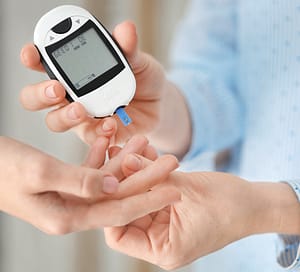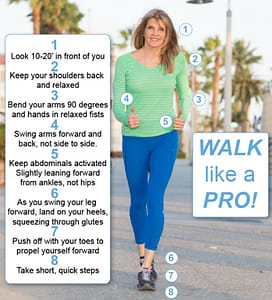How fast you walk may indicate a risk of type 2 diabetes, a new study finds.
It’s common knowledge that walking contributes to a variety of health benefits, from improved cardiovascular health to better balance.But a recent study found that the speed at which you walk could also be something to consider.
New research, published last month in the British Journal of Sports Medicine, found that walking at a speed of 4 or more kilometers an hour is associated with a reduced risk of type 2 diabetes.
Additionally, results show that the faster someone walks above the speed of 4 km/hour, the lower their risk of type 2 diabetes. For every 1 km increase in speed, there was a 9% decreased risk.
Researchers analyzed data from 508,121 adults from the U.S., Japan, and the UK between 1999 and 2022. Participants who walked at a speed of 2-3 miles (or 3-5 kilometers) per hour were linked with a 15% decreased risk of type 2 diabetes, regardless of the length of time they walked.
Additionally, participants who walked faster, at a speed of 3–4 miles/hour or 5–6 km/hour, had a 24% decreased risk of type 2 diabetes compared to a slower-paced walk.1
Here’s how walking speed can impact someone’s risk of type 2 diabetes, and what people can do to make the most out of their walking habits.
Increasing Walking Pace May Lower Risk of Type 2 Diabetes

The main reason walking at a faster speed can lower your risk of diabetes is because of insulin, a hormone in the body that regulates blood sugar.
Increasing the intensity of physical activity—like walking faster—helps insulin function better, by absorbing blood sugar in the muscles, rather than in the bloodstream (which can cause high blood sugar levels).
What Walking Speed Demonstrates About Overall Health
Walking pace can also be an indicator of a person’s overall well-being.
“Faster walking speed might be a readout of better overall fitness and general health and people that have higher fitness are usually in better metabolic shape,” Mireille Serlie, MD, PhD, professor of internal medicine (endocrinology) at Yale School of Medicine, told Health.
“Also, the association [between walking speed and type 2 diabetes] weakened when corrected for BMI, suggesting that body weight is a confounding factor in some of these studies,” she said. “High BMI is a risk factor for type 2 diabetes.”
Walking speed can indicate many things beyond how “fit” someone is and should be considered as an alternative vital sign, Boudreaux added.
For example, walking speed may affect heart health, life expectancy, ability to perform activities of daily living, cognitive function, and even disability status.
Serlie suggests everyone keep track of their walking speed, just for general health awareness, whether by a treadmill, activity tracker, smartwatch, or simply by keeping note of how long you’ve been walking and how far you’ve gone.
It’s worth noting that increasing your walking speed can far extend beyond a lower risk of diabetes.
How to Increase Your Walking Speed

Boudreaux recommends the following tips for increasing walking speed:
- Make sure you are wearing well-fitted shoes, as wearing old shoes or shoes with the incorrect size can result in an injury.
- Maintain a good body posture while keeping your shoulders straight, back straight, and chest raised with eyes looking forward. Remember to have your arms bent at 90 degrees.
- Push off your toes while focusing on taking more steps with a shorter stride length.
Boudreaux explained that walking faster can also lower the risk of cardiovascular disease, different forms of cancer, dementia, and mortality.
“However, it is also important to remember that even if you walk slowly or quickly for 30 minutes every day you should take additional walking breaks throughout the day to reduce the negative health risks of prolonged sitting,” he said.
Another major benefit of walking quickly is weight management and maintaining healthy blood sugar levels.
“Walking faster increases the demand for energy and thus burns more calories,” Serlie said. “Also, glucose levels decrease because working muscles increase glucose uptake.”
If you have any questions or concerns about your walking speed, how to improve your walking habits, or what your walking tendencies may indicate about other areas of your well-being, seek advice from a trusted healthcare professional.





